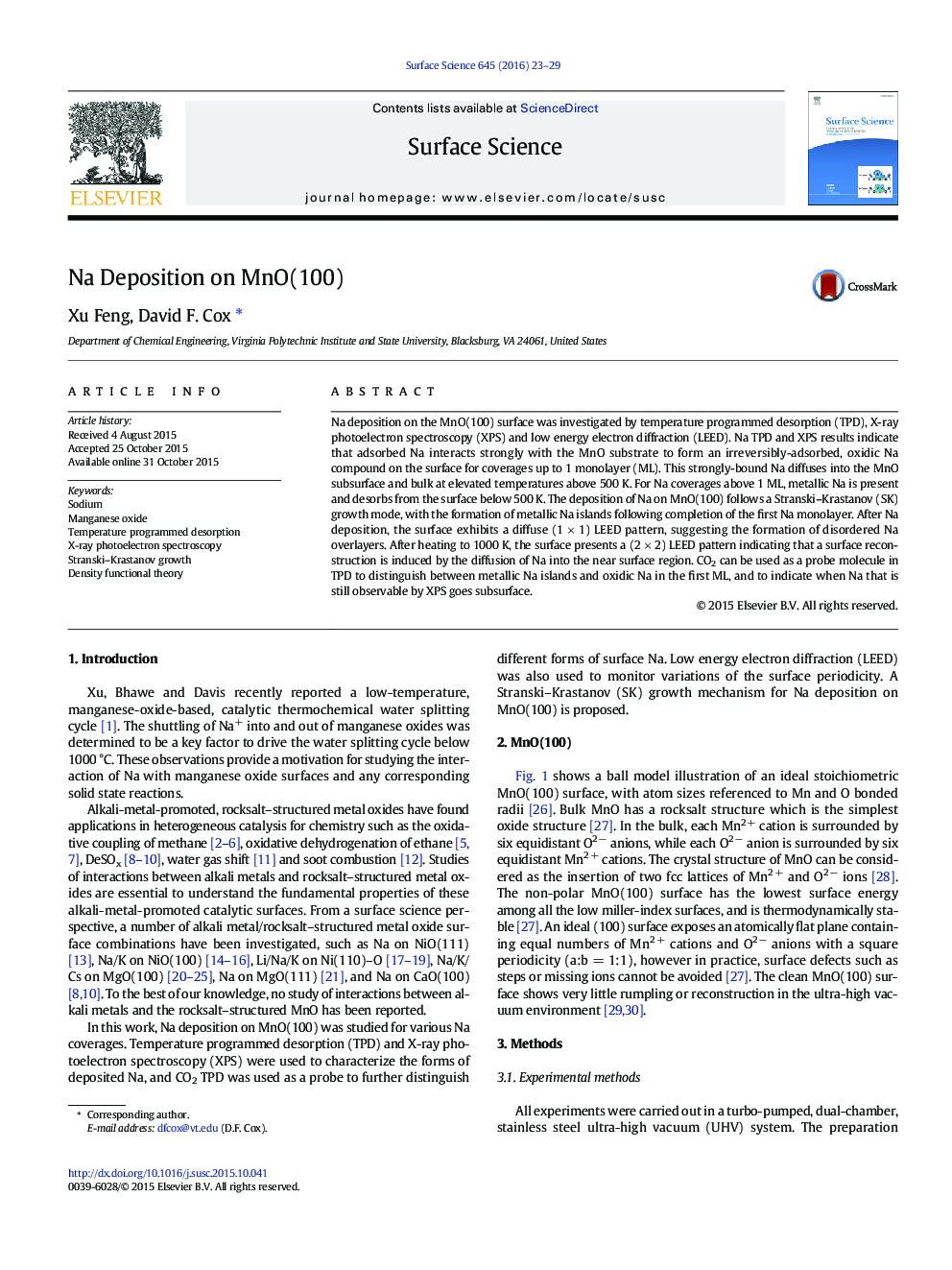| کد مقاله | کد نشریه | سال انتشار | مقاله انگلیسی | نسخه تمام متن |
|---|---|---|---|---|
| 5421710 | 1507885 | 2016 | 7 صفحه PDF | دانلود رایگان |

• Na deposition on MnO(100) follows a Stranski–Krastanov growth mode.
• Na in the first monolayer binds as an irreversibly-adsorbed, oxidic surface species.
• For Na coverages above 1 ML, metallic Na islands are formed.
• CO2 TPD can distinguish between metallic Na islands and oxidic Na in the first ML.
• Oxidic Na goes subsurface at high temperatures driving a (2 × 2) reconstruction.
Na deposition on the MnO(100) surface was investigated by temperature programmed desorption (TPD), X-ray photoelectron spectroscopy (XPS) and low energy electron diffraction (LEED). Na TPD and XPS results indicate that adsorbed Na interacts strongly with the MnO substrate to form an irreversibly-adsorbed, oxidic Na compound on the surface for coverages up to 1 monolayer (ML). This strongly-bound Na diffuses into the MnO subsurface and bulk at elevated temperatures above 500 K. For Na coverages above 1 ML, metallic Na is present and desorbs from the surface below 500 K. The deposition of Na on MnO(100) follows a Stranski–Krastanov (SK) growth mode, with the formation of metallic Na islands following completion of the first Na monolayer. After Na deposition, the surface exhibits a diffuse (1 × 1) LEED pattern, suggesting the formation of disordered Na overlayers. After heating to 1000 K, the surface presents a (2 × 2) LEED pattern indicating that a surface reconstruction is induced by the diffusion of Na into the near surface region. CO2 can be used as a probe molecule in TPD to distinguish between metallic Na islands and oxidic Na in the first ML, and to indicate when Na that is still observable by XPS goes subsurface.
Figure optionsDownload high-quality image (120 K)Download as PowerPoint slide
Journal: Surface Science - Volume 645, March 2016, Pages 23–29